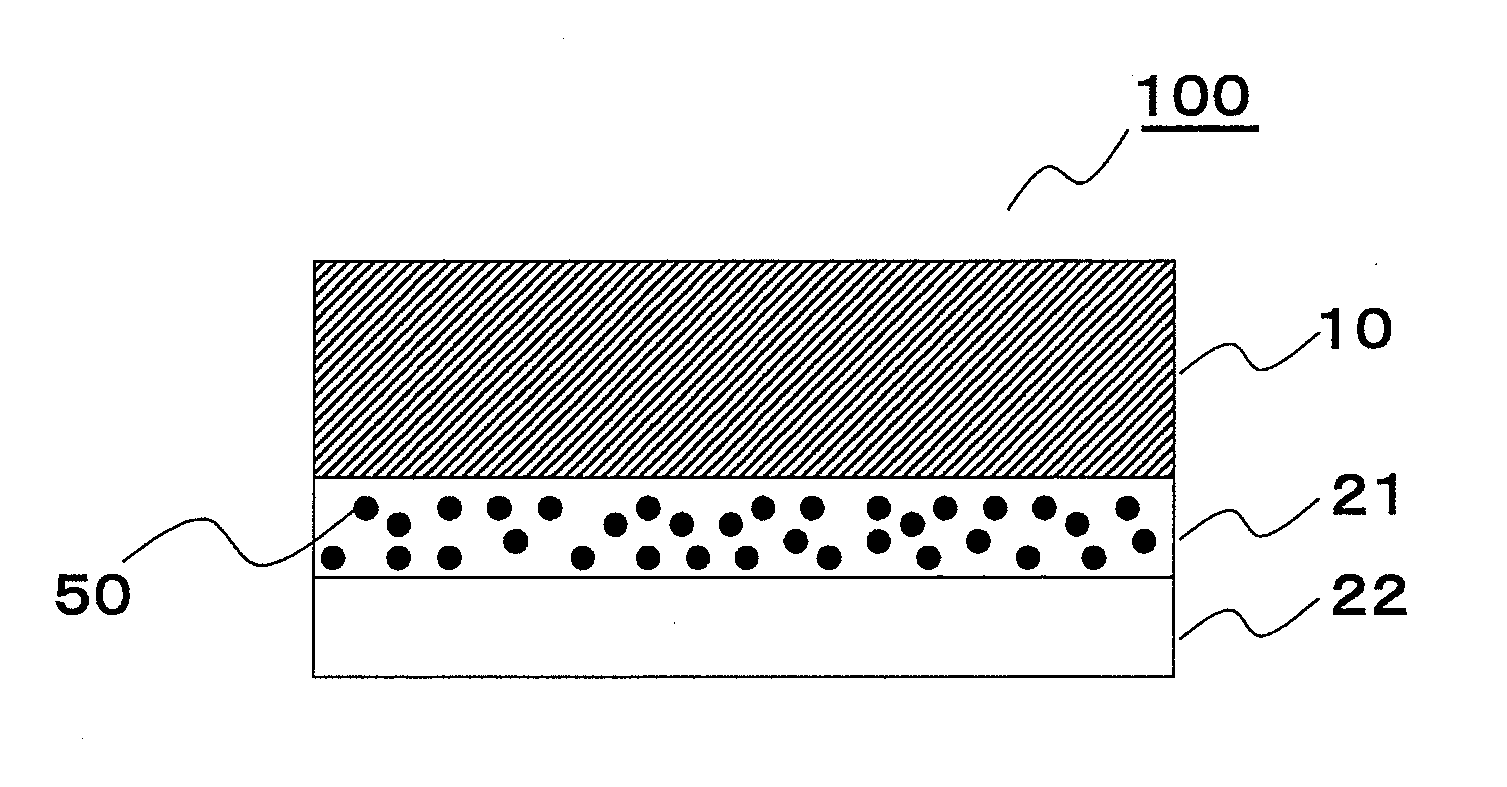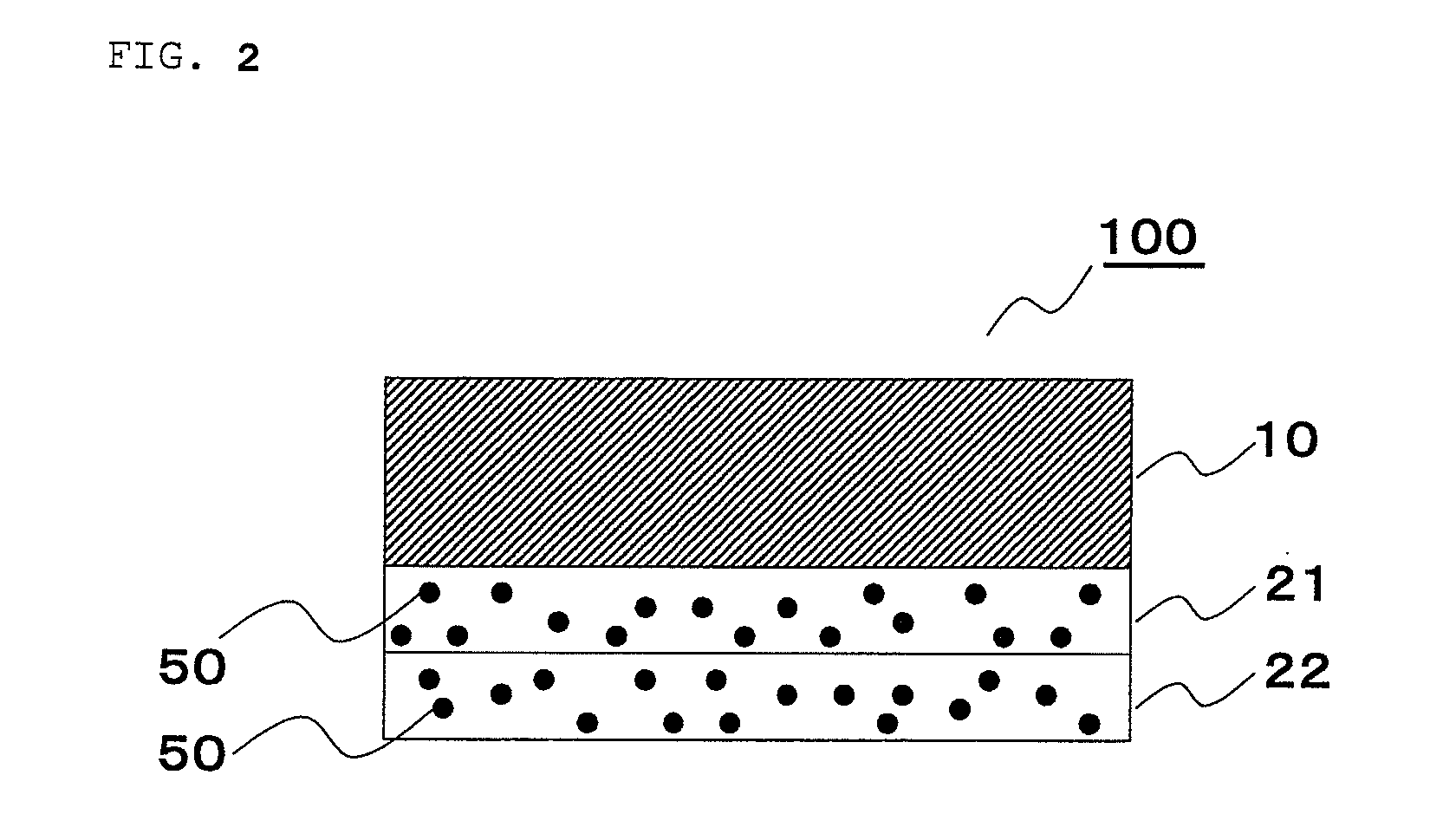Pressure-sensitive adhesive tape
- Summary
- Abstract
- Description
- Claims
- Application Information
AI Technical Summary
Benefits of technology
Problems solved by technology
Method used
Image
Examples
example 1
[0112]The following compounds were prepared as a forming material of a base material layer, a forming material of a first pressure-sensitive adhesive layer, and a forming material of a second pressure-sensitive adhesive layer.
[0113]Forming material of base material layer: A low-density polyethylene (G201 manufactured by Sumitomo Chemical Co., Ltd.)
[0114]Forming material of first pressure-sensitive adhesive layer: A mixture of 50 parts by weight of a styrene-based thermoplastic elastomer formed of a hydrogenated product of a styrene-butadiene-based copolymer (G1657 manufactured by Kraton Polymers) and 50 parts by weight of a tackifier (ARKON P-125 manufactured by Arakawa Chemical Industries, Ltd.)
[0115]Forming material of second pressure-sensitive adhesive layer: A styrene-based thermoplastic elastomer formed of a hydrogenated product of a styrene-butadiene-based copolymer (G1657 manufactured by Kraton Polymers)
[0116]The above-mentioned materials were formed by three-kind, three-laye...
example 2
[0119]The following compounds were prepared as a forming material of a base material layer, a forming material of a first pressure-sensitive adhesive layer, and a forming material of a second pressure-sensitive adhesive layer.
[0120]Forming material of base material layer: A low-density polyethylene (G201 manufactured by Sumitomo Chemical Co., Ltd.)
[0121]Forming material of first pressure-sensitive adhesive layer: A mixture of 50 parts by weight of a styrene-based thermoplastic elastomer formed of a hydrogenated product of a styrene-butadiene-based copolymer (TUFTEC H1062 manufactured by Asahi Kasei Corporation) and 50 parts by weight of a tackifier (ARKON P-125 manufactured by Arakawa Chemical Industries, Ltd.)
[0122]Forming material of second pressure-sensitive adhesive layer: A styrene-based thermoplastic elastomer formed of a hydrogenated product of a styrene-butadiene-based copolymer (G1657 manufactured by Kraton Polymers)
[0123]The above-mentioned materials were formed by three-k...
example 3
[0126]The following compounds were prepared as a forming material of a base material layer, a forming material of a first pressure-sensitive adhesive layer, and a forming material of a second pressure-sensitive adhesive layer.
[0127]Forming material of base material layer: A low-density polyethylene (G201 manufactured by Sumitomo Chemical Co., Ltd.)
[0128]Forming material of first pressure-sensitive adhesive layer: A mixture of 50 parts by weight of a styrene-based thermoplastic elastomer formed of a hydrogenated product of a styrene-butadiene-based copolymer (TUFTEC H1041 manufactured by Asahi Kasei Corporation) and 50 parts by weight of a tackifier (ARKON P-125 manufactured by Arakawa Chemical Industries, Ltd.)
[0129]Forming material of second pressure-sensitive adhesive layer: A styrene-based thermoplastic elastomer formed of a hydrogenated product of a styrene-butadiene-based copolymer (TUFTEC H1062 manufactured by Asahi Kasei Corporation)
[0130]The above-mentioned materials were fo...
PUM
| Property | Measurement | Unit |
|---|---|---|
| Thickness | aaaaa | aaaaa |
| Thickness | aaaaa | aaaaa |
| Fraction | aaaaa | aaaaa |
Abstract
Description
Claims
Application Information
 Login to view more
Login to view more - R&D Engineer
- R&D Manager
- IP Professional
- Industry Leading Data Capabilities
- Powerful AI technology
- Patent DNA Extraction
Browse by: Latest US Patents, China's latest patents, Technical Efficacy Thesaurus, Application Domain, Technology Topic.
© 2024 PatSnap. All rights reserved.Legal|Privacy policy|Modern Slavery Act Transparency Statement|Sitemap



